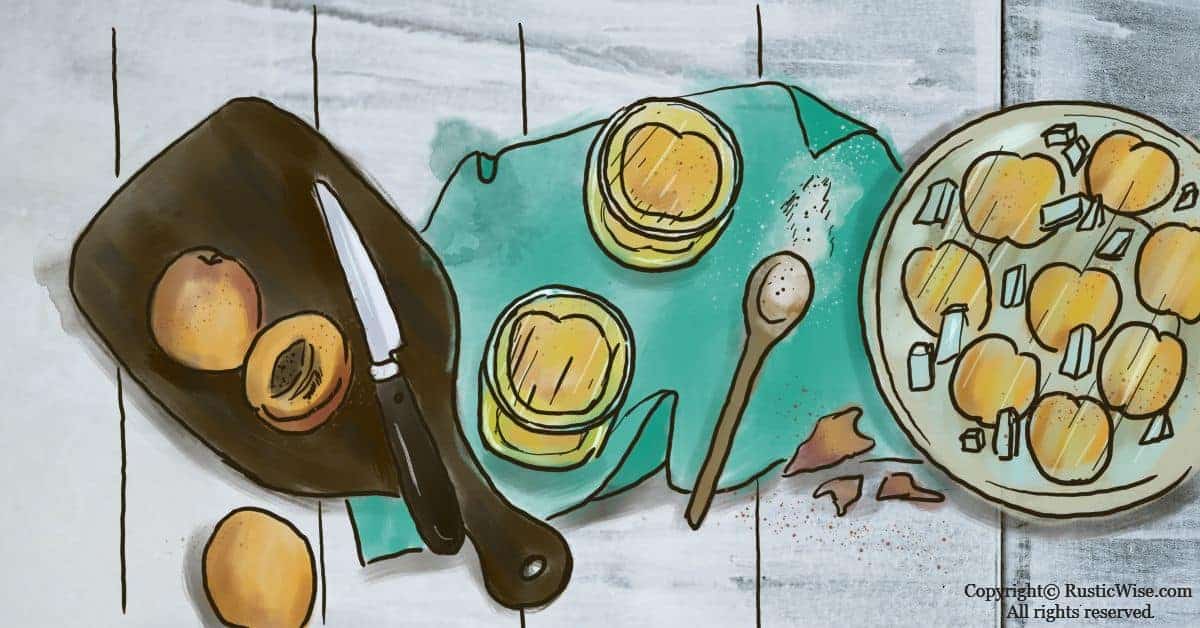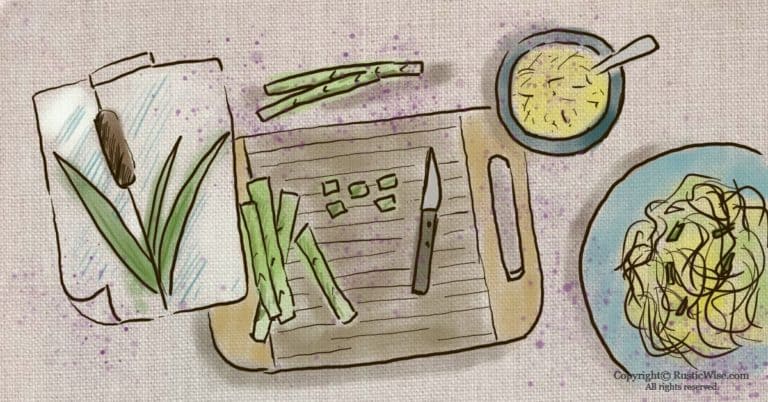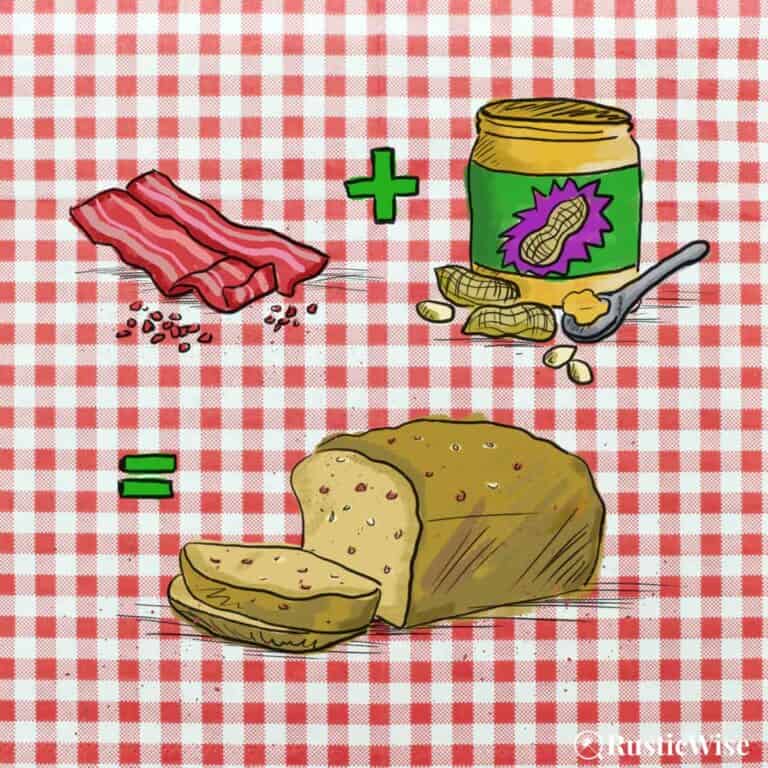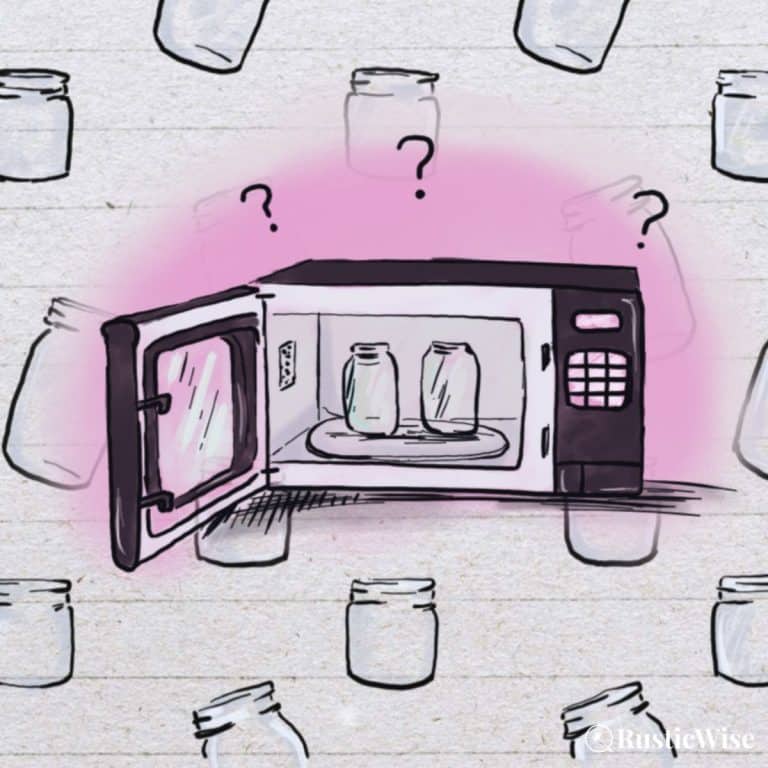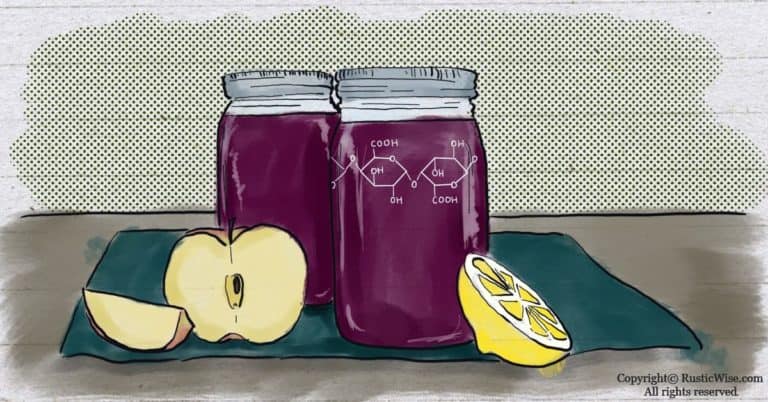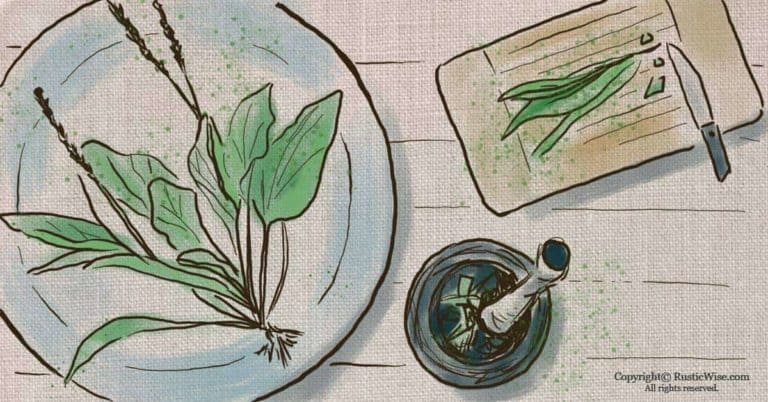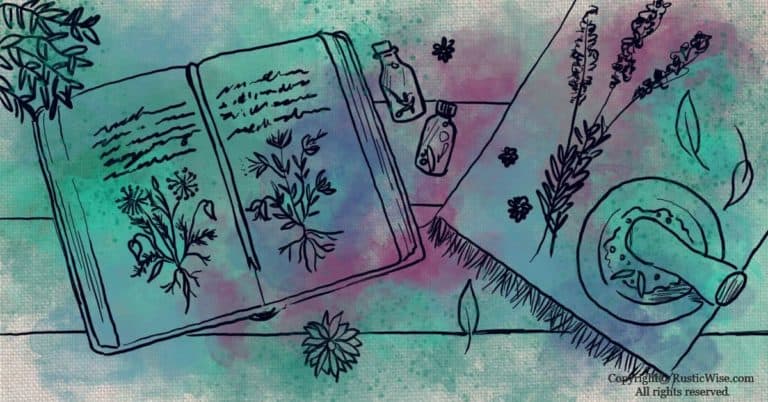How To Make Heavy Syrup for Peaches: Tips and Tricks
Biting into a ripe peach is one of summer’s simple pleasures. Too bad this goodness doesn’t last—peaches have a notoriously short shelf life. The next best thing to fresh peaches are home-canned ones! To preserve this tasty fruit at its peak freshness, we’ll show you how to make heavy syrup for peaches. Heavy syrup is the traditional way to can peaches, but we’ll also show you how to make lighter syrup if you want to cut back on sugar.
Syrup plays a central role in canning peaches: it helps to preserve the color, flavor, and shape of this easily-bruised fruit. (The syrup doesn’t actually preserve the peaches, though.) You can adjust the heaviness or lightness of peach syrup by adjusting the sugar to water ratio.
So, break out your trusty water bath canner. Set aside a day or two to preserve summer’s bounty—your tastebuds will thank you for it.
How to make heavy syrup for peaches (and light syrup too!)
The following handy chart is from the National Center for Home Food Preservation. It gives us five variations of syrup from very light to very heavy. Each variation adjusts the sugar content by 10 percent.
The “very light” syrup is based on an estimation of a fruit’s sugar content.
Table: Preparing and using syrups
| Syrup Type | Approx. % Sugar | For 9-Pt Load (1) | For 7-Qt Load | Fruits Commonly packed in syrup (2) |
|---|---|---|---|---|
| Very Light | 10 | Cups Water: 6-1/2 Cups Sugar: 3/4 | Cups Water: 10-1/2 Cups Sugar: 1-1/4 | Approximates natural sugar levels in most fruits and adds the fewest calories. |
| Light | 20 | Cups Water: 5-3/4 Cups Sugar: 1-1/2 | Cups Water: 9 Cups Sugar: 2-1/4 | Very sweet fruit. Try a small amount the first time to see if your family likes it. |
| Medium | 30 | Cups Water: 5-1/4 Cups Sugar: 2-1/4 | Cups Water: 8-1/4 Cups Sugar: 3-3/4 | Sweet apples, sweet cherries, berries, grapes. |
| Heavy | 40 | Cups Water: 5 Cups Sugar: 3-1/4 | Cups Water: 7-3/4 Cups Sugar: 5-1/4 | Tart apples, apricots, sour cherries, gooseberries, nectarines, peaches, pears, plums. |
| Very Heavy | 50 | Cups Water: 4-1/4 Cups Sugar: 4-1/4 | Cups Water: 6-1/2 Cups Sugar: 6-3/4 | Very sour fruit. Try a small amount the first time to see if your family likes it. |
2.) Many fruits that are typically packed in heavy syrup are excellent and tasteful products when packed in lighter syrups. It is recommended that lighter syrups be tried, since they contain fewer calories from added sugar.
As you can see, to “thicken” a syrup you’ll need to increase the amount of sugar and reduce the amount of water.
Please ensure you follow a reputable recipe to prevent any botched canning jobs. The last thing you want are jars and jars of spoiled peaches—a travesty!
Tip: You can replace up to one-half of the specified sugar with another sweetener such as mild-honey, or light corn syrup. Avoid using sweeteners containing saccharin (which may turn bitter) or aspartame which loses its sweetness when processed.
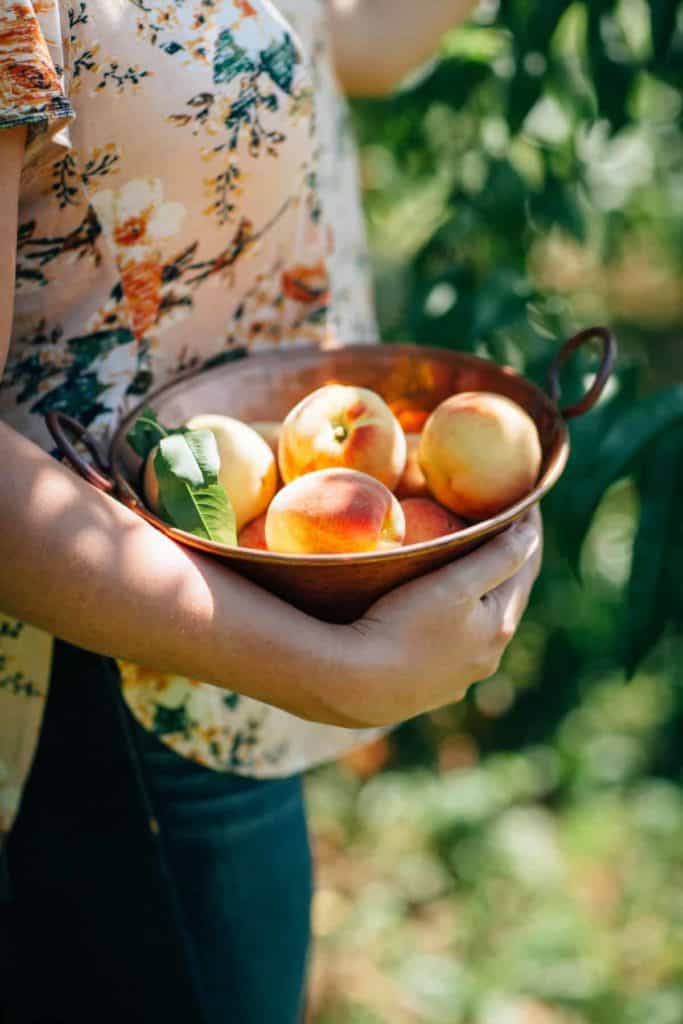
How to pick perfect peaches
Okay, maybe there’s no such thing as “perfect” peaches, but there are definitely some peaches that are more worthy of canning than others. Here’s a few tips on selecting the right peaches for canning:
- Select peaches that are fully ripened.
- Avoid any peaches with bruises, soft spots or discoloring.
- Peaches with golden-flesh tend to look “prettier” in jars than their light/white counterparts.
Clingstone vs. freestone peaches
Both varieties of peaches are suitable for canning, but for different reasons. Both clingstone and freestone come in golden or white-colored varieties.
Freestone peaches as the name suggests are larger peaches in which the pits or “stones” are easily removed from the flesh. Once you slice them in half, the pits fall right out (which makes your job easier!). Most grocery stores carry freestone peaches.
Clingstone peaches have pits which cling to the flesh and don’t want to let go. They are smaller, and slightly sweeter. Most commercially-canned peaches are of the clingstone variety. You can often find clingstones at farmers’ markets.
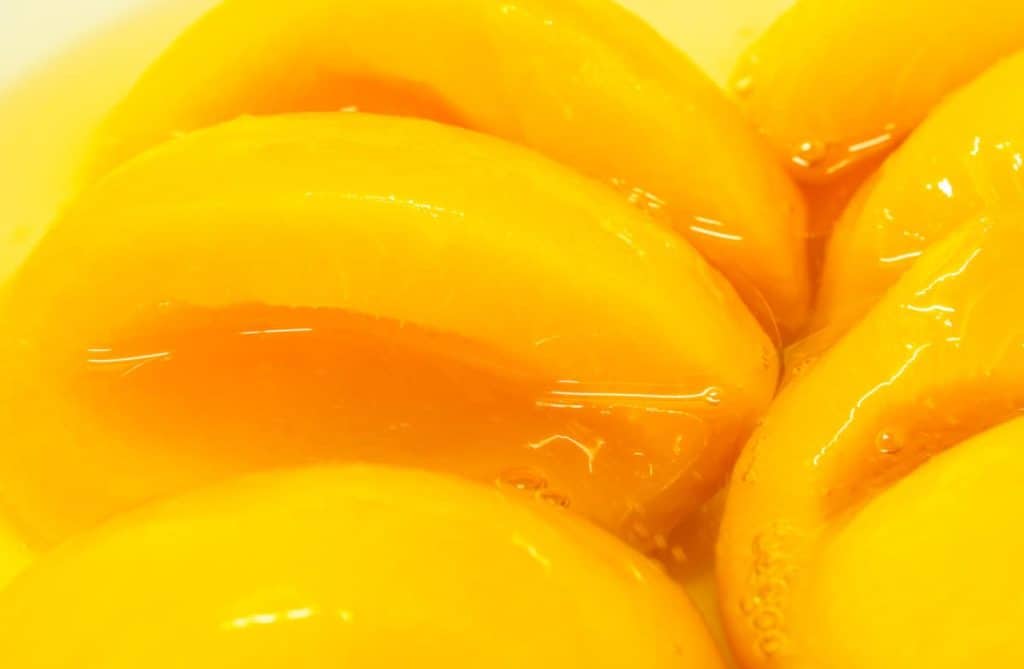
How to make peach syrup and can peaches
Here’s a recipe for Peaches in Syrup adapted from the book “Canning, Pickling & Preserving by Kimberley Willis”. It uses a Goldilocks approach (not too heavy, not too light) by using a medium-heavy peach syrup.
This recipe calls for hot packing peaches. This means the peaches are precooked slightly. Did you know that precooking inactivates enzymes that cause discoloring?
If you’re new to canning, check out our Definitive Guide on How to Can Food.
Note: It’s optional to remove skins on peaches. Peaches will still preserve fine with skins on; however they may turn a bit slimy! Most home canners tend to remove skins. If you prefer to leave them on, skip the first step.
Canned peaches recipe
Yield: 7 quarts
- Water bath canner
- Large stockpot for preparing syrup for peaches
- 7 clean quart jars and lids
- Jar lifter
- Oven mitts
- Large bowl for making a cold water bath to remove skins
- Colander
- Ladle
- Wooden chopstick to remove air bubbles
- Headspace measurer
- Cutting board and knife
- Several clean dishcloths
Ingredients you’ll need:
- 17 1/2 pounds peaches
- Solution to preserve color: 1/2 cup lemon juice combined with 1/2 gallon water
- 5 cups white sugar
- 8 cups water
- Extra: Ice for preparing a cold water bath to remove skins
Step 1: Wash peaches
Place peaches in a colander and thoroughly wash.
Step 2: Remove skins
Bring a large pot of water to a boil. In the meantime, prepare a cold water bath with ice cubes for the peaches in a large bowl. Place peaches into boiling water for 1 minute then promptly remove and place in ice bath. (Leaving peaches for too long in boiling water will make them mushy!) Skins should easily come off now. Remove and discard.
Step 3: Slice peaches
Slice peaches in half and remove pits. To prevent discoloration, place peaches in a large bowl with your lemon juice solution. Once you’re ready to use them, drain.
Step 4: Prepare peach syrup
In a large stockpot combine water and sugar. Bring to a boil and add the drained peaches. Bring to a boil again. Once the peaches and syrup boil, turn off the heat.
Step 5: Pack peaches
Ensure your jars are kept warm. Use a ladle to scoop peaches and syrup into clean, warm jars. Place the peach halves face down (flat side down). Leave 1/2 inch of headspace.
Step 6: Remove air bubbles and place lids on
Once all your jars are packed, use a wooden chopstick to gently remove air bubbles. Refill with more syrup if necessary.
Check out our post on how to remove air bubbles.
Wipe the rims of the jars and place the lids on.
Step 7: Process
Process in a water canner for 25 minutes (if you’re at 0–1,000 feet elevation).
- For elevation of 1,001–3,000: process for 30 minutes
- For elevation of 3,001–6,000: process for 35 minutes
- For elevation of 6,001+: process for 35 minutes
Related questions
How do you know when sugar syrup is done?
Once you bring your sugar and water to a boil, it’s usually considered done. To test the consistency, take a spoon and scoop a small amount and let it drip off the spoon. If it drips easily, it may need a few more minutes. The desired consistency, should be slightly thicker, like pancake syrup (for heavier syrups).
Keep in mind that if you made a lighter syrup, it’ll be more runny.
Are canned peaches bad for you?
Canned peaches in-and-of-itself are not bad for you; but the sugar content may not be great for you. Many canned peaches are made using heavy syrup which contains 40–50 percent sugar.
Try making homemade canned peaches with lighter syrup for reduced sugar content. They might be just as tasty as their heavy syrup counterparts!
👉 If you like this post, see our Ultimate Guide on How To Can Food. 🍎
Would you like more timeless tips via email?
Fun tips to help you live an independent, self-sustaining lifestyle. Opt-out at any time.


References:
- National Center for Home Food Preservation, Syrups for Canning Fruit, https://nchfp.uga.edu/how/can_02/syrups.html. Accessed May 2021.
- Foster, Kelli (19 July 2017). “What’s the Difference Between Freestone and Clingstone Peaches?” The Kitchn. Accessed May 2021.
- Willis, Kimberley (2010). Canning, Pickling & Preserving: Tools, Techniques & Recipes to Enjoy Fresh Food All Year-Round. Knack / Morris Book Publishing. ISBN 978-1-59921-950-9.

Author: Theresa Tesolin
Theresa is co-founder of RusticWise. She helps people unleash their inner DIY spirit by encouraging them to get dirty and make or grow something from scratch.

